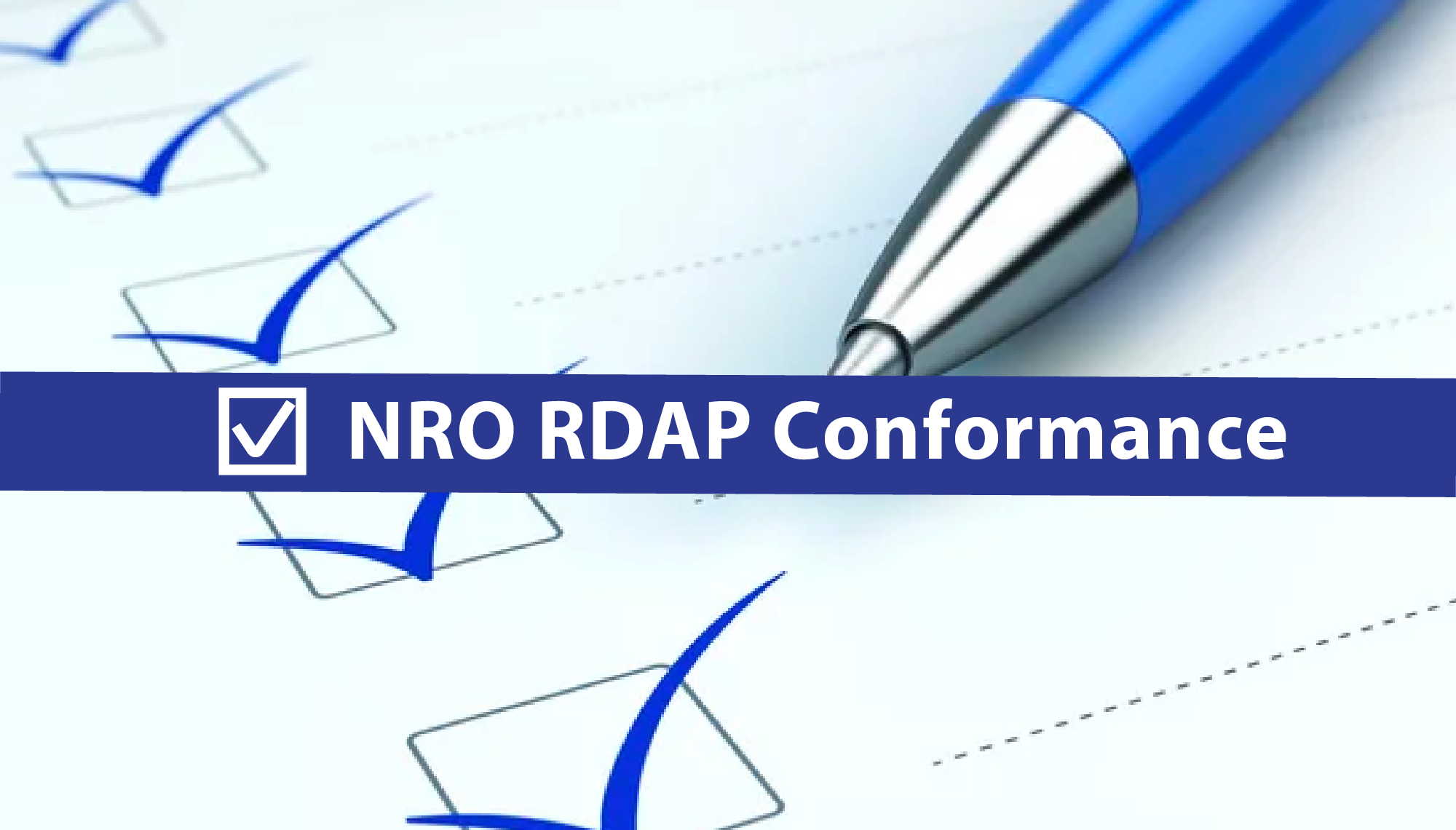
ARIN Achieves NRO RDAP Profile Conformance
Over the last nine months we have been making a number of changes to ARIN’s Registration Data Access Protocol (RDAP) service to align with the Number Resource Organization (NRO) RDAP Profile. With our most recent deployment, ARIN now fully conforms with the NRO RDAP Profile, which will make our customers’ experience with this service more consistent and simplified globally as the RDAP service at each RIR will answer in the same way for key elements.
What is RDAP?
RDAP stands for Registration Data Access Protocol and is a Whois alternative for querying resource registration data from Domain Name Registries (DNRs) and Regional Internet Registries (RIRs). Only 95 standards have ever been established in the life of the Internet, and RDAP one of them - STD 95.
What is the NRO RDAP Profile?
The Number Resource Organization (NRO) defined an RDAP Profile for use by each of the five RIRs globally to increase consistency in their service offerings. The need for the profile originated from the complexities RDAP clients faced when processing inconsistent responses from each RIR’s RDAP service. By tightening the profile, it gives consistency and standardization across all RIRs. Previously, a client had to deal with solutions for each individual RDAP service, which could get expensive. Now, thanks to this new profile, clients and developers will only need to deal with one set of solutions, saving them money, effort, and time.
Achieving NRO RDAP Profile Conformance
We had a systematic and effective process to close these gaps between ARIN’s current offering and the NRO RDAP Profile, providing better service offering for our customers. We completed our work in two iterations:
Released December 2021
- IP and ASN resources in IANA’s special-purpose registries are indicated with a reserved status
- Added nro_rdap_profile_0 string to responses and the nro_rdap_profile_asn_flat_0 string to autnum responses
- Updated the rdapConformance field in a help response to include values for all implemented server extensions
- Updated the nameservers field for domain response to reflect correct case
- Changed the rel type in RDAP responses for the Whois Inaccuracy Reporting web link to inaccuracy-report and the Terms of Service web link to terms-of-service
- Set status to active in autnum responses
- Include trailing period in ldhName values for reverse domain responses
Released February 2022
- Flag IP addresses and AS numbers from IANA to an RIR with administrative status
- Redirect a reverse domain query for another RIR’s space
- Redirect a reverse domain query to RIR with registration authority or to which resource was transferred
- Query for a reverse domain that does not exist will return the closest encloser
Before deployment of these RDAP enhancements, we provided our customers time in ARIN’s Operational Test and Evaluation (OT&E) environment to test and verify the changes.
Coordination and Cooperation Among the RIRs
As discussions continue among the NRO Engineering Coordination Group (ECG) about how to adhere to standards and to coordinate engineering efforts, ARIN participated in a collaborative effort to achieve parity among each of the RIR RDAP services. Each of the other RIRs have committed to conform to the NRO RDAP Profile in 2022 as well.
With NRO RDAP Profile conformance, one standardized solution instead of many benefits all RDAP users. This is a win for all RDAP users and an important milestone in the evolution of RDAP.
Recent blogs categorized under: Updates
GET THE LATEST!
Sign up to receive the latest news about ARIN and the most pressing issues facing the Internet community.
SIGN ME UP →Blog Categories
Tips • RPKI • IRR • IPv6 • Public Policy • Caribbean • Outreach • Elections • ARIN Bits • Grant Program • Fellowship Program • Training • Security • Updates • Guest Post • Data Accuracy • Business Case for IPv6 • Internet Governance • IPv4 • Customer Feedback


